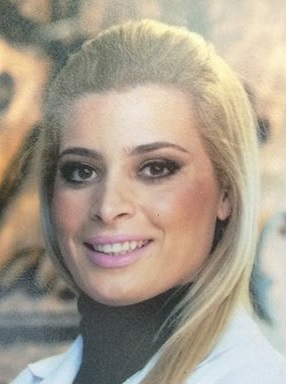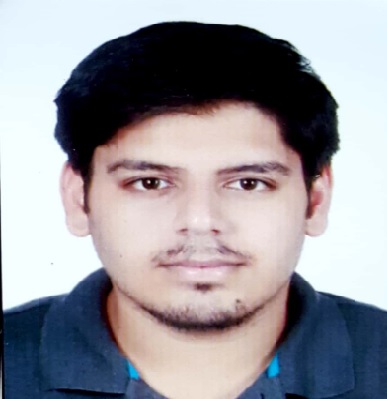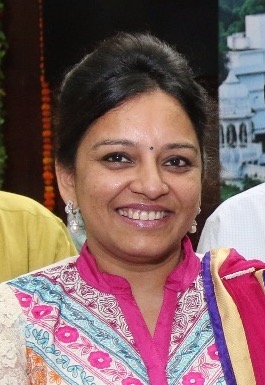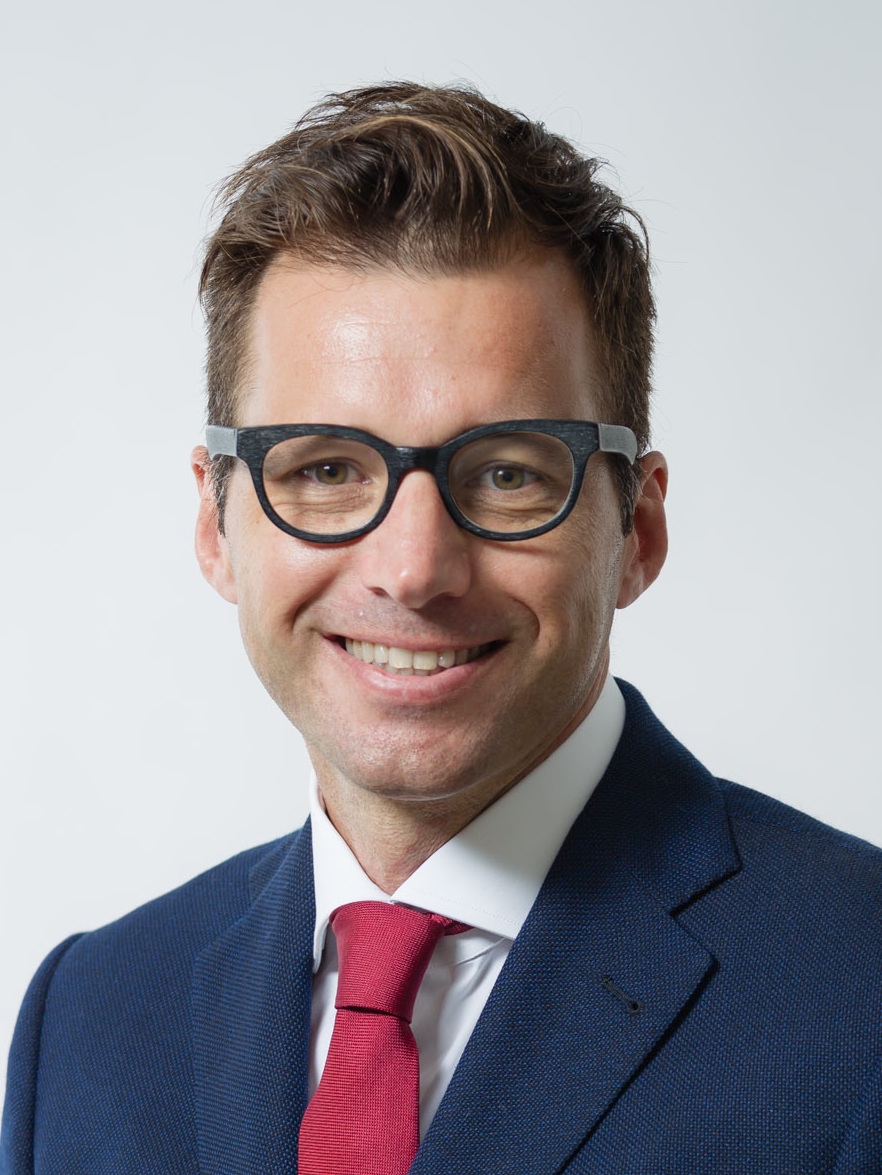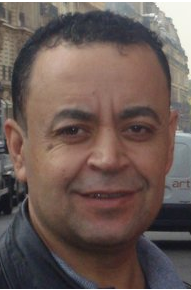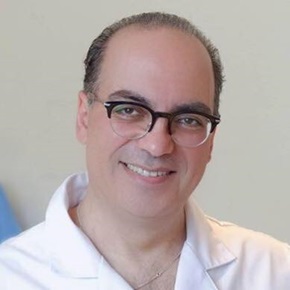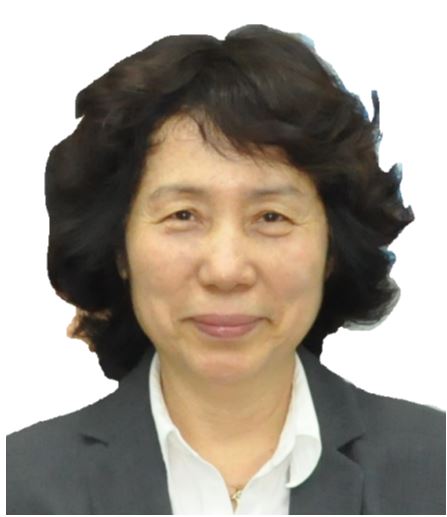Sessions and Tracks
Track 01: Dental Sleep
Dental Sleep Medicine is an evolving specialty focused on the diagnosis and management of sleep-related breathing disorders, particularly snoring and Obstructive Sleep Apnea (OSA). These conditions significantly affect patients’ quality of life and have widespread implications on public health, productivity, and long-term systemic wellness.
This field integrates dentistry with sleep medicine through a comprehensive approach that includes:
The Essentials of Dental Sleep Medicine course offers a practical foundation for dental professionals aiming to incorporate sleep disorder management into their practice. This curriculum:
-
Provides a structured overview of sleep-related breathing disorders
-
Explores the pathophysiology of OSA and its health consequences
-
Discusses diagnostic strategies and clinical workflow for OAT integration
-
Concludes with case-based applications, offering real-world clinical scenarios to enhance diagnostic acumen and therapeutic decision-making
As sleep disorders continue to rise globally, dental professionals are uniquely positioned to collaborate in multidisciplinary sleep care teams, offering non-invasive, evidence-based solutions. With increased awareness and education, dental sleep medicine stands at the forefront of modern oral healthcare bridging the gap between dentistry and sleep science to improve patient outcomes.
Track 02: Cosmetic Dentistry
Cosmetic dentistry refers to a specialized branch of dental care aimed at enhancing the appearance rather than the primary function of a person’s teeth, gums, and bite. While restorative in nature at times, its core focus lies in aesthetic improvement, addressing concerns related to:
-
Tooth color and brightness
-
Alignment and spacing
-
Shape and size of teeth
-
Gum symmetry and contour
-
Overall smile design and harmony
Cosmetic dental procedures include a wide array of treatments such as teeth whitening, veneers, dental bonding, contouring, crowns, bridges, and orthodontics. These treatments are not only designed to improve visual appeal but also to boost patient confidence and self-esteem.
With the growing demand for smile makeovers, cosmetic dentistry continues to evolve through advanced technologies, minimally invasive techniques, and digital smile design tools, making aesthetic enhancements more accessible, natural-looking, and long-lasting.
Track 03: Craniofacial Surgery
Craniofacial surgery is a highly specialized subspecialty that integrates plastic surgery, oral and maxillofacial surgery, and otolaryngology–head and neck surgery. This discipline focuses on the correction of congenital, developmental, and acquired deformities affecting the head, skull, face, neck, jaws, and associated anatomical structures.
Unlike procedures limited to specific tissues, craniofacial surgery is comprehensive in scope, involving the reconstruction and reshaping of bone, muscle, skin, nerves, and dental structures to restore both aesthetic appearance and functional integrity.
Conditions commonly addressed by craniofacial surgeons include:
-
Craniosynostosis (isolated and syndromic)
-
Rare craniofacial clefts
-
Facial trauma and fractures (acute and chronic)
-
Congenital anomalies of the jaw and skull
-
Reconstructive needs following tumor resection or trauma
Advances in 3D imaging, custom prosthetics, virtual surgical planning, and multidisciplinary team approaches have significantly enhanced surgical precision and outcomes in this field. Craniofacial surgery plays a transformative role in improving functionality, appearance, and quality of life for patients of all ages facing complex facial conditions.
Track 04: Restorative Dentistry
Restorative Dentistry is a specialized branch of dental care that focuses on the study, diagnosis, and integrated management of diseases affecting the oral cavity, teeth, and supporting structures. It plays a central role in the rehabilitation of oral function, while also addressing the psychological and aesthetic needs of each individual patient.
This specialty brings together the expertise of:
The foundation of Restorative Dentistry lies in the seamless collaboration of these disciplines to manage complex and multifaceted cases. As a result, it is often referred to as "Oral Rehabilitation", particularly when addressing advanced dental conditions that require input from multiple specialties including:
With increasing life expectancy and more patients retaining teeth later in life, the complexity of oral health needs is rising. Restorative dentists often work in multidisciplinary clinical teams to develop and implement comprehensive treatment plans that restore function, comfort, aesthetics, and quality of life for patients with extensive dental challenges.
This collaborative approach ensures holistic, patient-centered care supporting everything from restoration of individual teeth to full-mouth rehabilitation in both general and medically compromised populations.
Track 05: Nanodentistry
First conceptualized in the year 2000, Nanodentistry has emerged as an innovative extension of nanomedicine, integrating cutting-edge nanotechnology into dental science and clinical practice. As this field evolves, nanodentistry is poised to transform key areas such as diagnostics, restorative materials, preventive care, and dental surgery, offering a new dimension of precision and efficiency in oral healthcare.
Core branches of nanodentistry include:
Recent advances have introduced high-performance nanomaterials for restoring decayed, carious, fractured, or missing teeth. These include:
By enabling minimally invasive procedures, enhanced biomimicry, and longer-lasting restorations, nanodentistry is setting a new standard for precision dentistry. As ongoing research continues to expand the possibilities, nanodentistry is expected to become a foundational element in the next generation of dental innovation.
Track 06: Hypnodontics
Hypnodontics is the specialized application of hypnosis in dentistry, aimed at facilitating comfortable, pain-free, and anxiety-reduced dental experiences. It blends the art and science of clinical hypnosis to manage patient stress, reduce fear, and minimize the need for pharmacological interventions during dental procedures.
This technique is particularly beneficial for patients who are:
-
Fearful or phobic
-
Anxious or tense
-
Pain-sensitive
-
Difficult to manage during appointments
By inducing a deeply relaxed, suggestible state, hypnodontics can help patients undergo treatments with less discomfort, enhanced cooperation, and often reduced need for anesthesia or sedation medications. For many, hypnosis offers a safe, non-invasive approach to overcoming dental anxiety enabling more regular care and improved oral health outcomes.
Ideally, the hypnotherapist collaborates with the dentist, meeting with the patient two to three days prior to the appointment to build rapport, assess responsiveness, and guide the individual through relaxation techniques tailored to their needs.
As more dental professionals embrace integrative care, hypnodontics stands out as a valuable modality to improve patient satisfaction, procedure efficiency, and overall treatment success especially in individuals with high dental anxiety or treatment avoidance histories.
Track 07: Dental Ergonomics
Dental Ergonomics is a specialized field focused on understanding and addressing the work-related musculoskeletal disorders (WMSDs) and stress-inducing physical behaviors commonly encountered in dental practice. It aims to identify risk factors that lead to physical strain and injury among dental professionals and to develop preventive strategies that enhance both clinician well-being and clinical performance.
Dentists and dental staff are particularly susceptible to:
-
Poor posture
-
Repetitive motion injuries
-
Neck, back, and shoulder strain
-
Hand and wrist fatigue
To mitigate these risks, dental ergonomics promotes:
-
Awareness and correction of improper working postures
-
Redesign of operatory layouts to encourage neutral body alignment
-
Selection of ergonomic instruments to reduce upper extremity stress
-
Incorporation of stretching, micro breaks, and proper lighting
-
Training in healthy workplace practices that minimize fatigue and discomfort
By integrating ergonomic principles into daily practice, dental professionals can significantly reduce occupational injuries, prolong their careers, and enhance clinical outcomes through greater comfort and efficiency.
Track 08: Orthodontics
Orthodontics is a specialized branch of dentistry focused on the diagnosis, prevention, and correction of misaligned teeth and jaws. Malocclusions such as crooked teeth, overbites, under bites, and jaw discrepancies not only affect dental aesthetics but also have significant implications for oral and overall health.
Improperly aligned teeth can lead to:
-
Difficulty in maintaining oral hygiene
-
Increased risk of tooth decay and periodontal disease
-
Premature tooth wear or loss
-
Excessive strain on chewing muscles, contributing to jaw pain, headaches, and TMJ disorders
-
Discomfort in the neck, shoulders, and back
-
Negative impact on facial symmetry and self-confidence
Orthodontic treatment using appliances such as braces, aligners, and retainers works to gradually reposition teeth into a harmonious alignment. Beyond improving appearance, orthodontics contributes to:
-
Better oral function and bite efficiency
-
Enhanced long-term dental health
-
Improved speech and chewing
-
Boosted self-esteem and quality of life
With advancements in digital diagnostics and discreet treatment options like clear aligners, orthodontic care is now more personalized, comfortable, and accessible than ever before empowering patients to achieve lifelong oral health and confident smiles.
Track 09: Laser Dentistry
Laser dentistry represents a significant advancement in modern dental care, offering a minimally invasive and highly precise alternative to traditional procedures. Dental lasers are specially designed tools used in a wide range of treatments, including the management of soft and hard tissues. They are commonly employed to reduce discomfort from canker and cold sores, expose partially erupted wisdom teeth, remove restrictive muscle attachments, manage gum tissue during crown impressions, eliminate overgrown tissues caused by medications, perform biopsies, treat inflamed gum tissue, assist in periodontal therapy, disinfect root canals, and accelerate teeth whitening procedures. One of the key advantages of laser dentistry is that it often reduces or eliminates the need for drills and anesthesia, leading to a more relaxed and comfortable patient experience. In addition, laser treatments generally result in less bleeding, reduced swelling, faster healing times, and greater precision in preserving healthy tissue. As laser technology continues to evolve, it is increasingly becoming a preferred method for delivering efficient, safe, and patient-friendly dental care.
Track 10: Dental Implantology
Dental Implantology is a specialized field of dentistry focused on the surgical placement and integration of dental implants artificial components that interact with the jawbone to support dental prosthetics such as crowns, bridges, dentures, facial prostheses, or serve as orthodontic anchors. The foundation of modern dental implants lies in a biological process known as osseo integration, where materials like titanium form a stable and intimate bond with the bone. Initially, the implant fixture is surgically inserted into the jawbone to allow for osseo integration, after which a dental prosthetic or an abutment is attached.
The success of dental implants depends on several factors, including the overall health of the patient, the condition of oral tissues, the presence of systemic medications that may affect bone healing, and the mechanical stress placed on the implant during daily functions. When placed under optimal conditions with healthy supporting structures, well-integrated implants exhibit high success rates typically ranging from 93% to 98% over a 5-year period, with prosthetic restorations often lasting 10 to 15 years or more. As a result, dental implantology continues to be a reliable and long-term solution for the restoration of oral function, aesthetics, and patient confidence.
Track 11: Periodontology
Periodontology, also known as periodontics, is a specialized branch of dentistry that focuses on the prevention, diagnosis, and treatment of diseases affecting the supporting structures of the teeth, collectively referred to as the periodontium. These structures include the gingiva (gums), alveolar bone, cementum, and the periodontal ligament. Periodontal diseases manifest in various forms, but they commonly result from the accumulation of bacterial plaque biofilms, particularly those composed of pathogenic "red complex" bacteria such as Porphyromonas gingivalis, Tannerella forsythia, and Treponema denticola. These pathogens trigger destructive host immune and inflammatory responses that gradually deteriorate the surrounding bone and connective tissues.
If left untreated, periodontal disease can lead to progressive alveolar bone loss and eventual tooth loss, making it the leading cause of tooth loss in adults worldwide. Periodontics not only addresses active disease but also emphasizes early detection, risk factor management (such as smoking and diabetes), and maintenance therapy to preserve oral health and prevent recurrence. Advancements in regenerative techniques, laser-assisted treatments, and host-modulatory therapies continue to enhance outcomes in modern periodontal care.
Track 12: Prosthodontics
Prosthodontics, also referred to as prosthetic dentistry, is a recognized dental specialty dedicated to the restoration and replacement of missing or deficient teeth and oral structures. It encompasses the diagnosis, treatment planning, rehabilitation, and long-term maintenance of oral function, aesthetics, and overall oral health in patients affected by tooth loss, structural deficiencies, or maxillofacial anomalies. Using biocompatible prosthetic substitutes, prosthodontists aim to restore comfort, function, and appearance, often employing fixed or removable dental prostheses such as crowns, bridges, dentures, veneers, and implant-supported restorations.
Prosthodontics plays a vital role not only in improving the patient's quality of life but also in managing complex restorative cases that may involve multidisciplinary collaboration with periodontics, orthodontics, oral surgery, and maxillofacial prosthetics. With advancements in digital dentistry, CAD/CAM technology, and implant prosthodontics, the field continues to evolve, offering highly customized and durable solutions for functional and aesthetic oral rehabilitation.
Track 13: Paediatric Dentistry
Paediatric Dentistry is a specialized branch of dentistry focused on the oral health care of infants, children, and adolescents, including those with special healthcare needs. Recognized by esteemed institutions such as the American Dental Association (ADA), the Royal College of Dentists of Canada, and the Royal Australasian College of Dental Surgeons, paediatric dentistry plays a crucial role in promoting lifelong oral health from the earliest stages of development.
Paediatric dentists are not only trained to address the unique dental needs of children but also act as educational partners for parents, guiding them in establishing healthy oral hygiene habits. According to the American Academy of Paediatric Dentistry (AAPD) and the American Academy of Paediatrics (AAP), a child’s first dental visit should occur by their first birthday or within six months after the eruption of the first tooth. This early introduction to dental care helps in identifying and managing potential oral health issues before they progress.
Track 14: Endodontics
Endodontics encompasses the study and practice of the basic and clinical sciences of the biology of the normal dental pulp and the etiology, diagnosis, prevention and treatment of diseases and injuries of the dental pulp along with associated per radicular conditions. Endodontics has evolved tremendously in the past decade and its applications have immensely improved the quality of dental treatment. Endodontists perform a variety of procedures including endodontic therapy (commonly known as "root canal therapy"), endodontic retreatment, surgery, treating cracked teeth, and treating dental trauma. Root canal therapy is one of the most common procedures. If the pulp (containing nerves, arterioles, venules, lymphatic tissue, and fibrous tissue) becomes diseased or injured, endodontic treatment is required to save the tooth. Endodontics is recognized as a specialty by many national dental organizations including the British General Dental Council, American Dental Association, Royal College of Dentists of Canada, Indian Dental Association, and Royal Australasian College of Dental Surgeons.
Track 15: Dental Marketing Management
Dental Marketing Management is an essential component of a successful dental practice, encompassing every point of interaction between the clinic and its patients. From the tone of communication used by front-desk staff and the aesthetics of the clinic’s logo to the consistency of branding across digital and printed materials each element contributes to shaping a lasting impression of the practice in the minds of current and prospective patients.
Effective dental marketing strategies are designed to enhance patient acquisition, foster retention, and build trust. This includes digital marketing, patient reviews, community engagement, educational content dissemination, and social media presence. A well-aligned marketing plan reflects the clinic's values and differentiates its services in a competitive healthcare environment.
On the other hand, dental practice management serves as the structural framework that ensures operational efficiency and high-quality care delivery. It involves strategic planning, workflow optimization, staff coordination, financial oversight, and the implementation of systems to manage appointments, billing, and compliance.
Key elements of successful dental management include:
-
Regular and comprehensive patient assessments to ensure accurate diagnosis and timely treatment.
-
A systematic approach to reactivating lapsed hygiene patients.
-
Clear communication strategies for treatment planning and patient education.
-
Emphasis on the importance of routine preventive care to support long-term oral health.
Together, dental marketing and management not only support business growth but also elevate the overall patient experience and clinical outcomes.
Track 16: Dental Robotics
Dental robotics represents a revolutionary advancement in oral healthcare, integrating nanotechnology and robotic systems to enhance precision, efficiency, and patient outcomes. At the forefront of this innovation are nanorobots microscopic devices typically measured in nanometers (10?? meters) developed using cutting-edge nanorobotics technology.
These highly sophisticated, micron-scale devices are capable of interacting precisely with biological structures at the molecular level, enabling unprecedented control and manipulation in dental applications. One promising development is the creation of dental nanorobots designed to maintain oral hygiene continuously through autonomous mechanical systems, often referred to as dentifrobots.
Potential applications of dental nanorobots include:
-
Targeted destruction of cariogenic bacteria without harming beneficial oral flora.
-
Repair of microstructural defects in enamel or dentin, improving tooth integrity.
-
Precision delivery of medications or anesthetics, minimizing systemic exposure.
-
Regenerative dental procedures, supporting tissue repair at the cellular level.
Although most of these technologies are still in early stages of research and clinical testing, the outlook is promising. Experts believe that nanorobotics in dentistry will play a transformative role in preventive care, diagnostics, minimally invasive treatment, and oral rehabilitation in the near future.
Track 17: Dental health
Dental health - According to World Health Organization, Dental health as a state of being free from mouth and facial pain, oral and throat cancer, oral infection and sores, periodontal disease, tooth decay, tooth loss, and other diseases and disorders that limit an individual’s capacity in biting, chewing, smiling, speaking, and psychosocial wellbeing. It includes healthy gums, hard and soft palate, linings of the mouth and throat, tongue, lips, salivary glands, chewing muscles, and upper and lower jaws. Good dental health enables us to speak, smile, kiss, breathe, whistle, smell, taste, drink, eat, bite, chew, swallow and express feelings.
Track 18: Oral Pathology
Oral pathology refers to the diseases of the mouth, jaws and related structures such as salivary glands, temporomandibular joints, facial muscles and perioral skin (the skin around the mouth). The mouth is an important organ with many different functions. It is also prone to a variety of medical and dental disorders. The specialty oral pathology is concerned with diagnosis and study of the causes and effects of diseases affecting the oral and maxillofacial region. It is sometimes considered to be a specialty of dentistry and pathology. Sometimes the term head and neck pathology is used instead, but this might imply that the pathologist deals with otorhinolaryngologic disorders (i.e. ear, nose and throat) in addition to maxillofacial disorders. In this role there is some overlap between the expertise of head and neck pathologists and that of endocrine pathologists.
Track 19: Dental Emergency
Dental emergencies are identified symptoms that need more immediate treatments. Dental emergencies can have many causes, including accidents, sports-related injuries, tooth decay and infection. Some of the dental emergencies are as like: a traumatic injury to your mouth, jaw or teeth, severe pain that you cannot control with over-the-counter pain medication, uncontrolled bleeding and severe swelling in mouth, face or neck.
Track 20: Oral and Maxillofacial Surgery
Oral-Maxillofacial Surgery is a surgical specialty which involves the diagnosis, surgery and adjunctive treatment of diseases, injuries and defects involving both the functional and aesthetic aspects of the hard and soft tissues of the oral and maxillofacial region. More simply put, the oral and maxillofacial surgeon is the orthopedic surgeon of the facial region. He or she is an individual who addresses problems ranging from the removal of impacted teeth to the repair of facial trauma.
Track 21: Oral Medicine
Oral Medicine is the discipline of dentistry concerned with the oral health care of medically complex patients-including the diagnosis and management of medical conditions that affect the oral and maxillofacial region. Oral medicine is concerned with clinical diagnosis and non-surgical management of non-dental pathologies affecting the orofacial region (the mouth and the lower face). Many systemic diseases have signs or symptoms that manifest in the orofacial region. Pathologically, the mouth may be afflicted by many cutaneous and gastrointestinal conditions. There is also the unique situation of hard tissues penetrating the epithelial continuity (hair and nails are intra-epithelial tissues). The biofilm that covers teeth therefore causes unique pathologic entities known as plaque-induced diseases.
Track 22: Oral Cancer
Oral cancer, particularly squamous cell carcinoma (SCC), accounts for over 90% of malignant tumors affecting the oral cavity and oropharynx. A major contributing factor is the synergistic effect of tobacco use and excessive alcohol consumption, both of which significantly elevate cancer risk. In specific regions such as the Indian subcontinent, the incidence is notably higher due to tobacco chewing practices.
The World Health Organization (WHO) Working Group has undertaken efforts to standardize histopathological terminology for describing precursor lesions across the head and neck region, enhancing diagnostic consistency and communication across disciplines.
While there has been substantial progress in understanding the molecular and genetic mechanisms driving the transition from precancerous lesions to invasive carcinomas, these insights have not yet been fully translated into targeted or novel therapeutic approaches. Continued research is essential to bridge the gap between molecular discoveries and clinical applications.
Oral cancer remains a global public health challenge, emphasizing the need for:
-
Enhanced public awareness and prevention programs,
-
Early screening and diagnosis, especially in high-risk populations,
-
Development of molecular-based therapies and personalized treatment strategies.
Digital dentistry is revolutionizing patient care through technologies like CAD/CAM, 3D printing, and digital radiography. This session explores how these tools enhance diagnosis, treatment planning, and restoration precision. Topics include intraoral scanners, virtual smile design, and digital impressions. Experts will also address training, cost, and integration challenges. Real-time demonstrations and future predictions will be discussed. Emphasis will be placed on improved patient outcomes. Presenters will showcase case studies highlighting digital success. Attendees will gain insights into workflow optimization and ROI. The session promotes a shift toward a fully digital dental practice.
With aging populations globally, dental care must adapt to unique challenges. This session focuses on oral health for elderly and medically compromised patients. Topics include denture management, dry mouth, and periodontal care. Strategies for treating patients with Alzheimer’s or Parkinson’s will be discussed. Emphasis will be placed on interdisciplinary care and patient communication. Techniques for non-invasive and minimally traumatic procedures are included. Pain management and polypharmacy risks are covered. Presenters will offer approaches for caregiver education. Attendees will learn to enhance comfort, safety, and dignity in treatment. It aims to improve access and quality of care.
Forensic odontology links dentistry with law and justice. This track explores how dental evidence aids in human identification and crime investigation. Topics include bite mark analysis, age estimation, and dental record comparison. Attendees will examine mass disaster protocols and forensic imaging. Case studies from real forensic events will be presented. Focus is also given to child abuse detection and trauma analysis. Legal responsibilities and documentation standards will be reviewed. Speakers will discuss collaboration with law enforcement and coroners. Participants will gain knowledge of medico-legal aspects of dental practice. This track highlights the crucial role of dentists in forensics.
Sustainable practices are becoming essential in modern dental care. This session highlights green initiatives within clinics and laboratories. Topics include reducing plastic use, eco-friendly sterilization, and energy-saving equipment. Experts will discuss mercury-free alternatives and biodegradable materials. The role of digital tools in minimizing waste is also explored. Attendees will learn how to implement greener workflows without affecting care quality. Environmental regulations and certifications will be reviewed. Success stories of eco-dental practices will inspire transformation. Emphasis is on cost-effective, sustainable solutions. The session promotes environmentally responsible healthcare delivery.
Tracks 27: Salivary Diagnostics and Biomarkers
Saliva is emerging as a key diagnostic fluid in medicine and dentistry. This session explores its use in detecting oral and systemic diseases. Topics include biomarkers for cancer, diabetes, and infections. Non-invasive testing techniques will be demonstrated. Experts will present advancements in biosensor technology. Attendees will understand the potential of point-of-care salivary tools. The track also covers the role of saliva in personalized treatment. Integration with chairside diagnostics is discussed. Clinical trials and research findings will be shared. This session positions saliva as the future of fast, accurate diagnostics.
